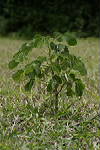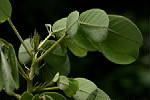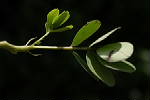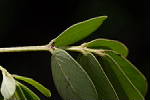




Botany Biology Phenology Ecology Distribution Agricultural importance Cultural control Chemical control
| Description : | Terrestrial, perennial, erect shrublet, up to 100 cm tall. Taproot white or brown. Stem rounded, solid, glabrous. Stipules present, triangular, glabrous. Leaves compound. Flowers bisexual, grouped together in an axillary raceme, stalked, petals 5, yellow. Fruit a pod. |
| Seeds : | Seeds are 20-30 per pod, rhomboidal, 5 mm x 3 mm glossy, with an areole (1.5-2 mm wide) covering part of the seed surface. |